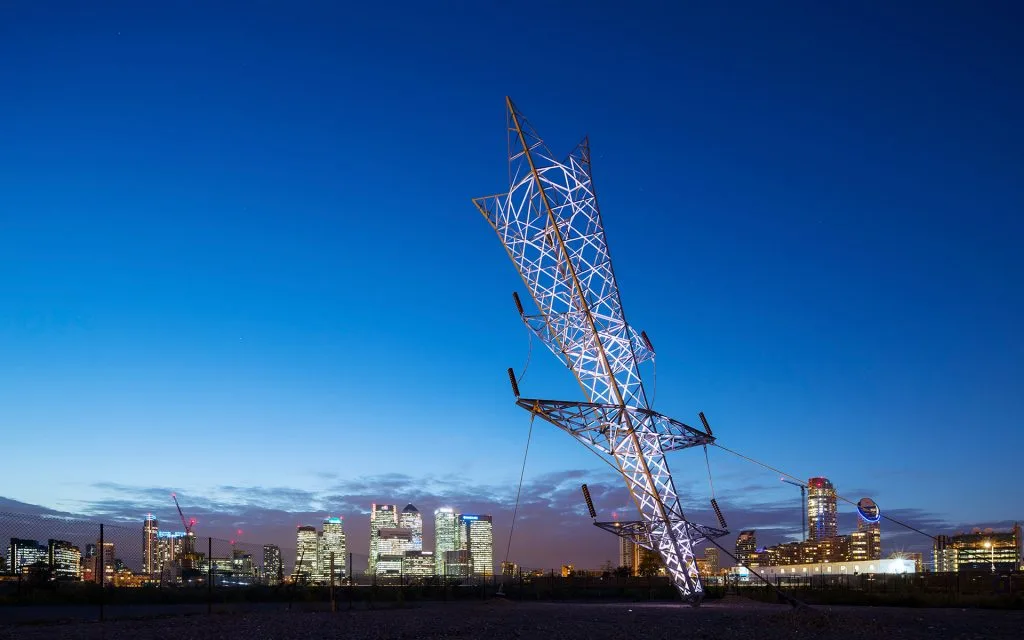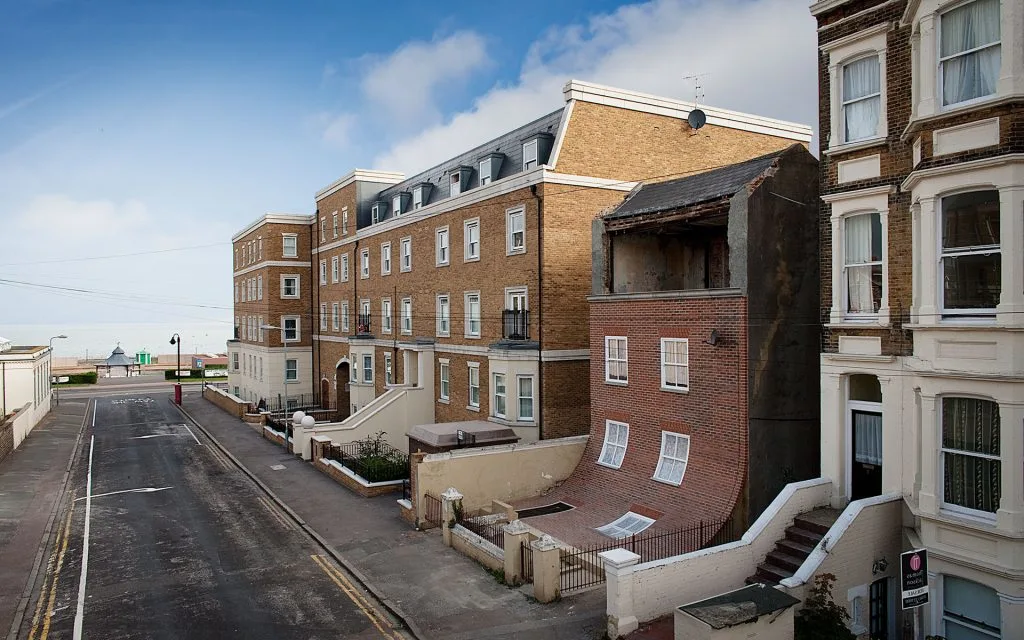

Step into the theatrical world of east London-based artist Alex Chinneck, where normal life gets picked up, turned inside out or flipped upside down in the most wonderful way. From sliding townhouse facades and floating buildings to Christmas trees trapped in ice, the master illusionist unites the disciplines of art, architecture, theater and engineering to create conceptually accessible interventions that bring a sense of lighthearted surrealism to the city streets – and a smile to your face.
“The public realm is no place for intellectual elitism,” says Alex. That’s why he has set out to create sculptures which, “elevate but never dominate the place in which they stand.” This, he believes, “heightens the believability of the story you are trying to tell.” And with Alex’s work, there’s always a story to be told.

With Take my lightning but don’t steal my thunder, for example, he sliced a historic building in Covent Garden through the middle, leaving the upper half to float mysteriously above the base, a playful reference to the area’s “performance culture.” In A bullet from a shooting star (2015), the artist planted a replica of an electricity pylon upside down at Greenwich Peninsula, inspired by the area’s history of industry and power generation. “The strongest public artworks are those that belong to their location, where a conceptual and aesthetic marriage between the sculpture and the situation has taken place.”
But while Alex likes to make a point with his work, he is also keen to create uplifting experiences. “I see no reason why the presentation of pain holds a higher status than the presentation of pleasure in the perception of a good artwork,” he says. “A positive experience is as equally valid as a difficult one.”
Playful, but by no means simple. Alex says the biggest misconception about his work is “that simple ideas are easy to execute.” If you dive a little deeper into his work process, you’ll see they’re definitely not. “It is incredibly challenging to reach simple visual moments, to balance theatricality and spectacle with sculptural feats and structural complexity. Illusory scenes tell stories of architectural destruction and it is in this measured and surprisingly considered approach that I look to create sculptures and never stunts.”

That was a wonderful balance of spectacle and subtlety
These sculptures are often created with the help of specialists in other disciplines – it’s what keeps him on his toes and prevents him from repeating himself. “My practice has evolved with the belief that through collaboration, more ambitious obstacles can be overcome. This approach is employed to keep my thoughts and creative direction unbound, so if I want to build a melting house from 7,500 wax bricks, I partner with a wax manufacturer.” He’s referring to his 2014 artwork A pound of flesh for 50p, a two-storey house that melted over 30 days to celebrate the history of a former candle-making factory in Bankside, London.
Yet, while bigger is often considered better, Alex proves that it doesn’t have to be the case. In Telling the truth through false teeth, for example, he was able to draw attention to issues of economic and social decline in relation to the London 2012 Summer Olympics by fitting smashed windows into a derelict factory near the stadium.
“That was a wonderful balance of spectacle and subtlety,” he explains. “I need to produce more work that speaks without screaming. Perhaps the expectation of my commissioners, combined with a subconscious desire to bolster my own ego has lead my work down a path that seeks media hype. Only the paranoid survive, so I think this anxiety is healthy.”








